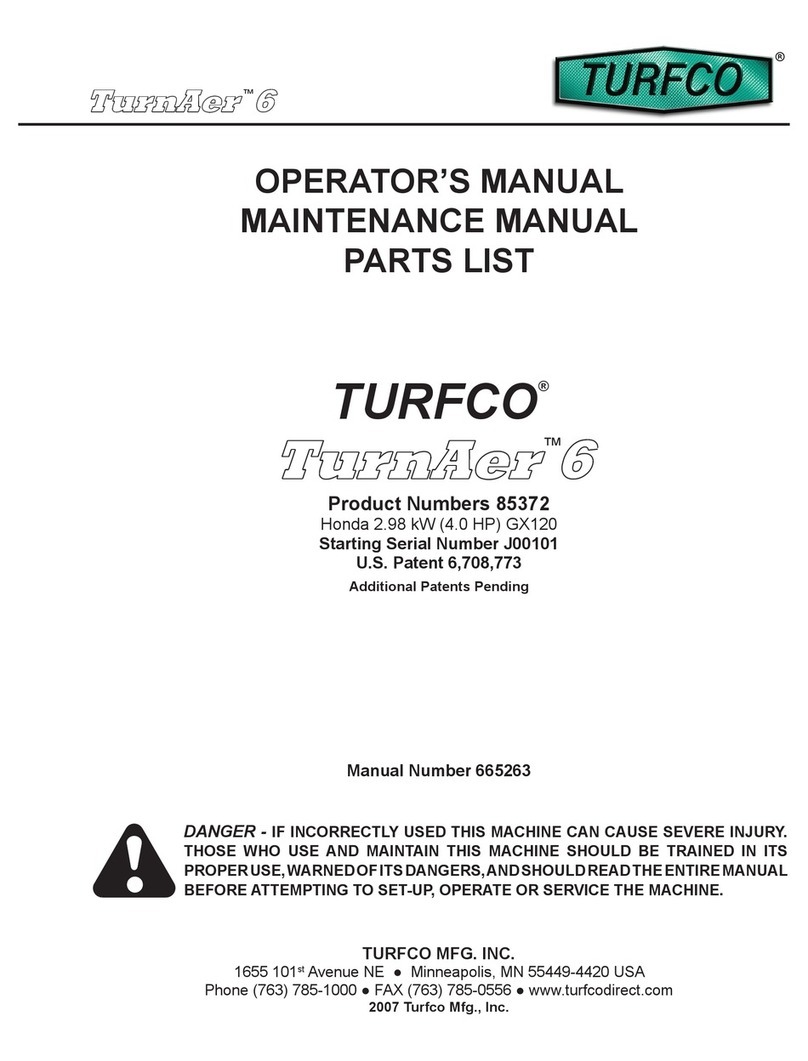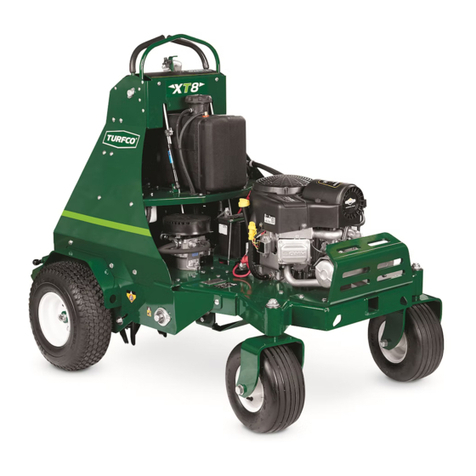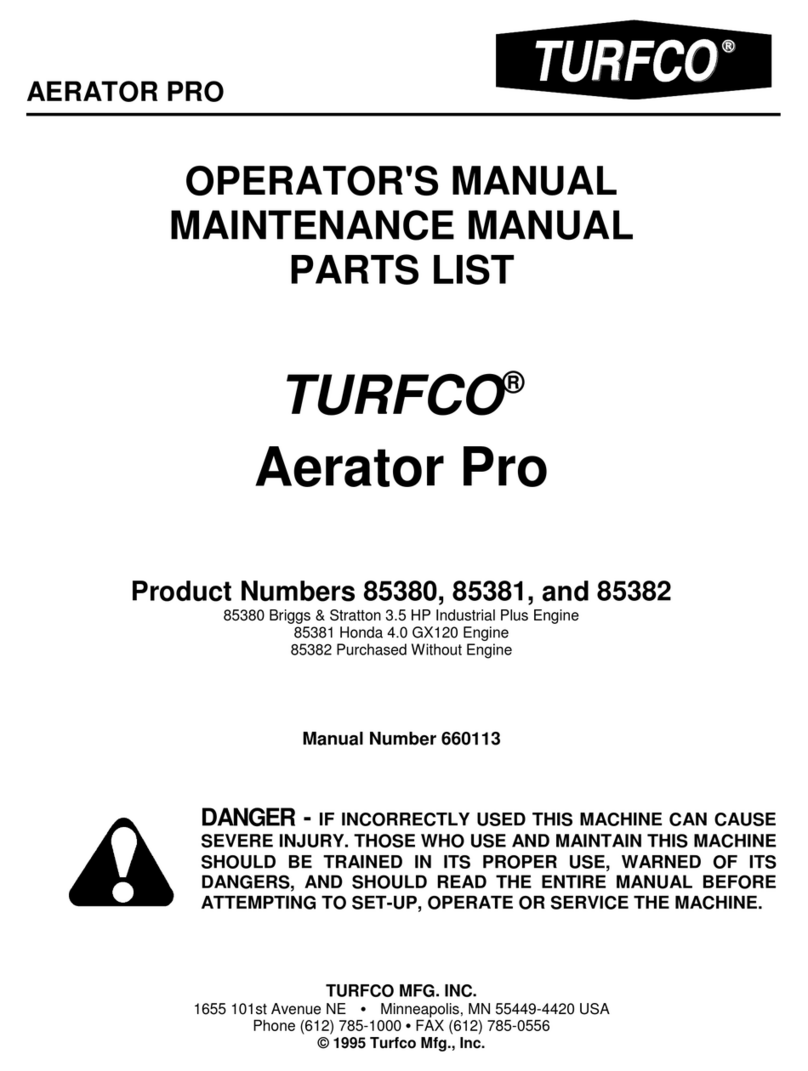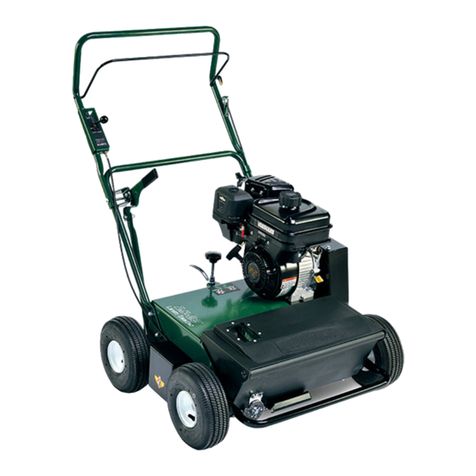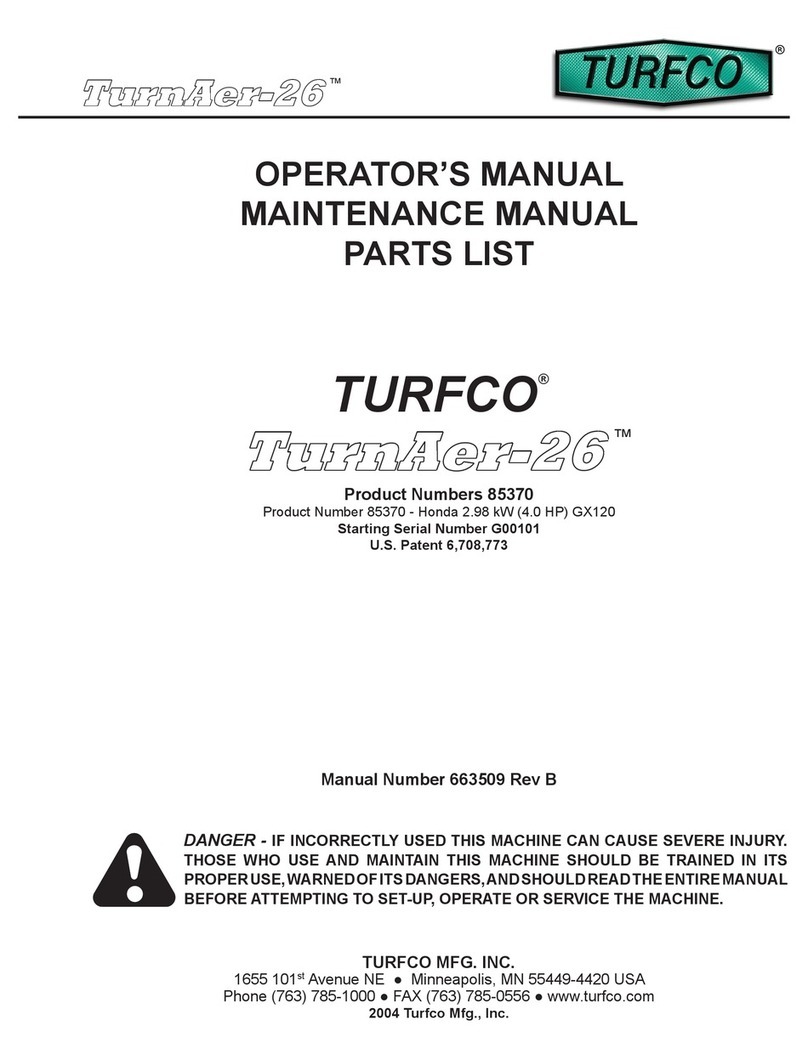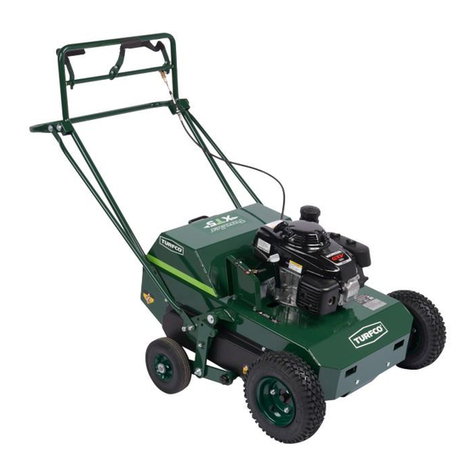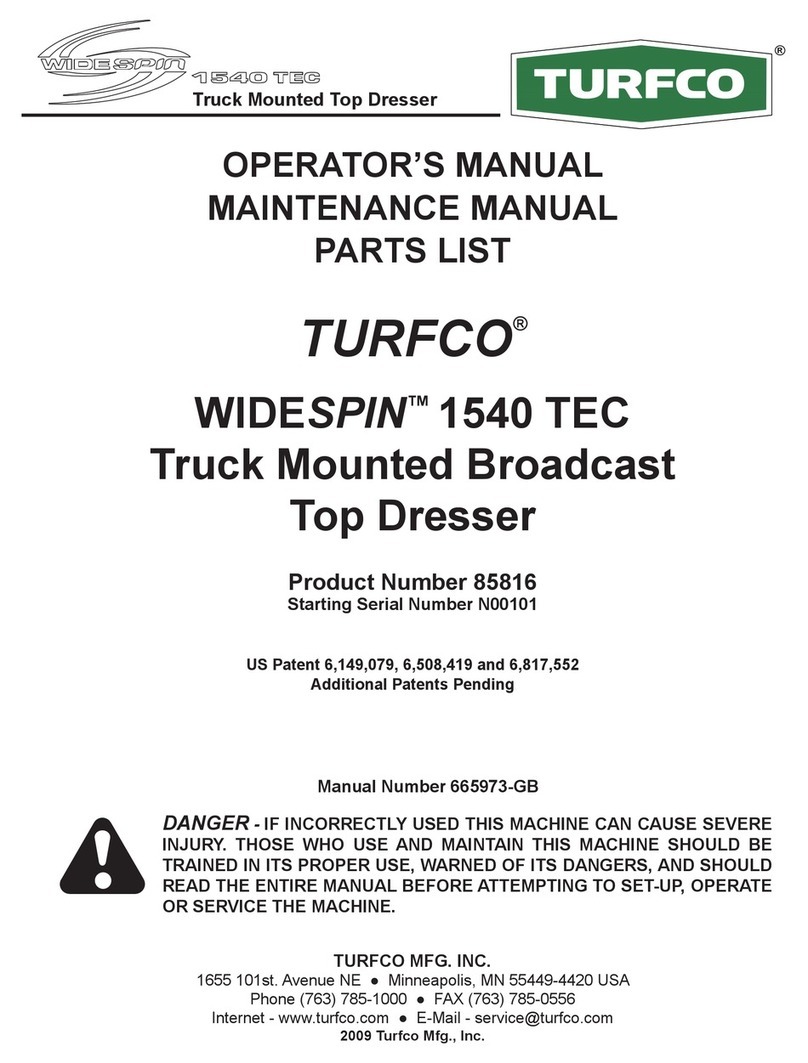
5
85540-85541
● Beware of slippery conditions. Wet turf can be
encountered on slopes, when turning or stopping, or
at higher speeds.
● Keep hands and feet away from cutting devices and
drive components. Shut o the engine and remove the
key or spark plug wire when servicing cutting devices
or drive components.
● Care should always be taken when mounting and
dismounting a riding machine. Prevent injuries and
falls by making sure the operator does not slip. Unless
it is an emergency, do not jump o a machine. Injury
may result when an operator’s foot slips trying to jump
from a machine.
● If required to lift, an operator should ask for help if
the object is too heavy. The operator should lift with the
legs instead of the back. Care should be taken to avoid
twisting the back while lifting a heavy load.
● Never allow children to operate the machine.
THE MACHINE:
● Do not modify the machine in any manner. Always
check the machine to make sure it is in good working
order.
● Do not place hands or feet near moving or rotating
● parts. Check that all guards are functional and
properly installed. Do not operate a machine without
all guards installed.
● Do not use your ngers or hands to check for leaks.
High pressure leaks can puncture the skin and force
oil into the body. This can cause severe injury or death.
● Check tires. Inate to pressure shown on tire.
● Check to assure that all controls are in good
operating condition.
● Do not overload machinery. The components
are designed for certain weights and capacities.
Overloading machine will cause unsafe conditions.
● Shut o the engine before servicing the machine.
Check machines on a level area. Machines on a slope
may roll when the engine is o.
● Refer unfamiliar repairs and adjustments to
mechanics that have been trained to do them properly.
● Replace decals that are damaged or illegible.
THE ENGINE:
● Do not run the engine in an enclosed area. The
exhaust gases contain carbon monoxide, an odorless
and deadly poison. The engine exhaust from this
product contains chemicals known to the State of
California to cause cancer, birth defects or other
reproductive harm.
● Do not refuel machines indoors or in an unventilated
area. Do not over ll. Do not add fuel while the machine
is hot because spilled fuel may cause a re. Use
fresh gasoline. Stale fuel can gum the carburetor and
can cause leakage. Check the fuel lines and ttings
frequently for cracks and leaks.
● Pull the starter cord slowly until resistance is felt.
Then pull the cord rapidly to avoid kickback and to
prevent hand or arm injury.
● Do not remove the fuel tank cap or ll fuel tank while
the engine is hot or running. Allow the engine to cool
before refueling.
● Do not operate the engine if gasoline is spilled. Do
not operate the engine when the smell of gasoline
is present or if any other explosive conditions exist.
Move the equipment away from the spill and avoid any
ignition until the gasoline has evaporated.
● Do not store, spill, or use gasoline near an open
ame. Do not store, spill, or use gasoline near a stove,
furnace, water heater, or appliance that uses a pilot
light or can create sparks.
● Do not choke the carburetor to stop the engine.
Whenever possible, gradually reduce the engine
speed before stopping.
● Do not tamper with the governor springs, links or other
parts to increase the engine speed. Run the engine at
the speed set by the equipment manufacturer.
● Keep the cylinder ns and the governor parts free of
dirt, grass, and debris which can aect engine speed.
● Do not transport the engine with fuel in the tank.
● Prevent accidental starting by removing the
spark plug wire(s) when servicing the engine or the
equipment. Disconnect the negative wire from the
battery terminal if the engine is equipped with an
electric starting system.
● Do not strike the ywheel with a hammer or any hard
object. This may cause the ywheel to shatter during
operation. Use the correct tools to service the machine.
● Do not check for a ignition spark with the spark plug
removed. Use an approved tester.
● Do not crank the engine with the spark plug removed.
If the engine is ooded, place the throttle in fast and
crank until the engine starts.
● Do not start the engine with the air cleaner and/or the
air cleaner cover removed. Do not operate the engine
without a muer. Replace the muer if it is leaking or
worn. Replace only with correct muer. Do not touch a
hot muer, cylinder, or n. It will cause burns.
● Do not operate the engine with an accumulation of
grass, leaves, or other combustible material in the
muer area.
● Do not use the engine on any forest covered, brush
covered, or grass covered unimproved land unless
a spark arrester is installed in the muer. The spark
arrester must be maintained in good working order.
In the State of California, the above is required by
law (Section 4442 of the California Public Resources
Code). Other state may have similar laws. Federal
laws apply on federal lands.
SAFETY
